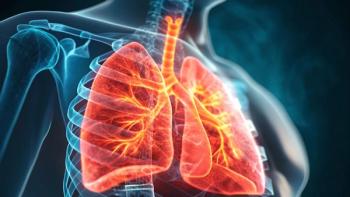
Having a ‘Tailored’ Treatment for Bladder Cancer is Crucial
It’s important to know what kinds of treatments are available for bladder cancer and understand that having a “tailored” treatment is important for patients, experts said.
There are so many types of treatment for bladder cancer, which can make it a challenge to understand what is available and most effective for you. So, CURE® spoke with two bladder cancer experts to discuss different types of treatments for bladder cancer.
Bladder cancer, according to the American Cancer Society, is when cells that form the urinary bladder begin to grow uncontrollably. When these cells continue to grow, it can turn into a tumor that may eventually spread to other parts of the body.
The cancer is classified based on how deeply the tumor has spread within the bladder walls, which includes muscle-invasive and non-muscle-invasive bladder cancer. Muscle-invasive bladder cancer is when tumor cells have invaded the muscle layer responsible for expelling urine, Dr. Petros Grivas from Fred Hutchinson Cancer Center, explained in an interview. Similarly, he noted that non-muscle-invasive bladder cancer is when the tumor has not yet been embedded into the muscle layer, thus it is more superficial.
Grivas is a medical oncologist, professor and clinical director of genitourinary cancer programs at Fred Hutchinson Cancer Center and the University of Washington.
LEARN MORE:
Different types of treatments are related to the stage of bladder cancer, Grivas said, and the extent of the cancer. Factors include the depth of the tumor into the bladder wall, whether it may be expanding into nearby lymph nodes and/or potential metastasis (spread) to other parts of the body, and “we also take into account what exactly the cancer looks like; how it looks under the microscope,” Grivas stated.
Types of treatment for bladder cancer include systemic (full body) therapies, such as chemotherapies and immunotherapies, which stimulate the immune system, as well as targeted or biologic therapies, Grivas said.
Specifically, combination therapies are widely used, which may include various types of chemotherapies.
“(Treatment with) methotrexate, Vinblastine, Adriamycin (doxorubicin) and cisplatin — the MVAC regimen — has shown to improve survival (or the longevity and chance of a cure) in patients with localized muscle-invasive bladder cancer before a radical cystectomy (surgical removal of the whole bladder), called neoadjuvant treatment,” Dr. Shifeng Mao, a medical oncologist, associate professor and chair of the urological oncology team at Allegheny Health Network Cancer Institute, explained in a separate interview.
A radical cystectomy is a type of procedure or surgery known to be standard-of-care for patients with muscle-invasive bladder cancer, Mao said, and “has saved a lot of patients’ lives.”
Mao said that although doctors have learned that by “doing radical cystectomy alone, (about) half of the patients will find that (the cancer may) recur later on,” meaning the surgery alone may not be enough for optimal treatment in some patients. "This is why we are using neoadjuvant chemotherapy before radical cystectomy in eligible patients. Survival has improved significantly."
Mao also noted that the four chemotherapies are now dose-dense when given to patients, meaning using “less of methotrexate and Vinblastine, but increasing the dose density of the more important drugs, which are cisplatin and Adriamycin.”
"By doing so, the treatment response is better, side effects are less and takes less time to complete a treatment course," he explained.
When MVAC isn’t the best option for patients with localized muscle-invasive bladder cancer, a combination of gemcitabine and cisplatin — two other chemotherapy drugs — is used in eligible patients. Mao stated that the gemcitabine-cisplatin combination has gained popularity among the clinical setting, as it has potentially less toxicities compared with MVAC, although dose-dense MVAC is much easier compared to the previous MVAC version.
In terms of knowing which patients are best fit for neoadjuvant chemotherapy, Mao explained that criteria are considered before choosing appropriate treatment for every patient and that doctors can’t “treat patients only by the book,” but also consider individual characteristics and several factors.
“To decide whether patients are eligible for (particular) chemotherapy before surgery, (for example), patients have to be cisplatin eligible, so that depends on several criteria,” Mao advised. “One: kidney function, and two: heart function, because cisplatin requires a lot of fluids, so if you overload the patient and they could develop heart failure, they cannot tolerate (it all). And three: poor performance (or functional) status. If a patient spends most of their day sitting in a wheelchair or lying in bed, then they may not be a good candidate for chemotherapy.”
Other factors include considering whether patients have neuropathy — or severe nerve damage — or hearing loss, Mao said.
Grivas also explained that doctors “discuss (these topics) with patients in detail and they together make these decisions, taking into account many cancer-related and patient-specific characteristics” of the patient they are treating.
“There is a plethora of therapy options, including trying to preserve the bladder in certain cases and scenarios, and we try to make them tailored, (so we can make a) customized and personalized decision,” Grivas said. “Utilizing some of those (therapies), or sometimes more than just one of those therapy tools, to treat the patient is based on the right diagnosis, other (possible) medical conditions, performance or functional status, patient preferences, etc.”
For more news on cancer updates, research and education, don’t forget to




